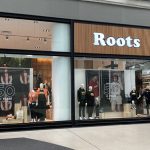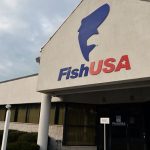With a strong response to spring offerings, Shoe Carnival Inc. reported earnings rose 19.5 percent in the first quarter, to $10.4 million, or 52 cents a share. Comparable store sales increased 3.0 percent.
On a conference call with analysts, Cliff Sifford, president and CEO, said the momentum the off-price shoe chain gained in January with the earlier tax refund season did not continue into February, when same-store sales declined 5 percent. Harsh winter weather in the Midwest led to 400 closed or partially closed store days in February and early March. The West Coast port congestion also delayed new spring product.
But once weather moderated and fresh spring product arrived in, comps rebounded.
“The sales increase for the quarter was broad-based, with all merchandise departments producing positive comps,” said Sifford. “Store traffic for the first quarter was up slightly to the same time period last year, which is the second quarter in a row in which we have seen a reversal of the negative traffic trends most retailers have experienced over the past several years.”
Average dollar transaction, unit sales, and average unit retail all showed positive growth for the quarter on a comp basis.
The consistent performance across all departments was led by canvas footwear. But Sifford was “also excited to see that women's boots and sandals both performed very well.”
By department, women's non-athletic saw the best gains, with a mid-single-digit comp increase.
For the two-month period of March and April that includes Easter in both periods, Shoe Carnival’s overall comps jumped 6.7 percent. Women's non-athletic and kids' athletic were up high-single-digits on a comparable basis, with every other major department posting mid-single-digit comps.
Asked about athletic’s performance in the Q&A session, Sifford noted that while some competitors place canvas in their athletic category, SCVL only puts product in athletic that can be used for sport.
“Our true athletic business is good,” said Sifford. “Our running business is good. Our basketball business in men's and women's is good. So I'm very happy with our athletic. In fact, our athletic business is running on plan.”
Gross margin in the quarter remained flat at 29.5 percent. The merchandise margin increased 0.1 percent while buying, distribution and occupancy expenses increased 0.1 percent as a percentage of sales. The West Coast port concession led to 1 cent per share of additional expense within cost of sales.
SG&A as a percent of sales, improved to 22.8 percent from 23 percent in the first quarter last year. Inventory at the quarter’s end was down 2.9 percent on a per-store basis, in-line with expectations.
Sifford noted that Shoe Carnival added almost 750,000 members to its loyalty program, Shoe Perks. Shoe Perks members spent, on average, almost 30 percent per transaction more than non-members, and accounted for 49 percent of first-quarter sales.
The CEO was “very pleased” with the performance of its online sales and is making progress with omnichannel initiatives. It currently has 250 stores capable of fulfilling online orders and will add another 100 doors over the next several months. It also last week began testing a “Shoes To You” initiative to enable in-store shoppers to take advantage of the selection and depth of sizes available online.
“We will continue to invest in our multi-channel initiative to not only meet or beat our customers' expectations, but to capitalize on our increasing online traffic and optimized conversion rate,” said Sifford. “Additionally, we'll make significant improvement to our mobile site, which has become a meaningful part of our overall online sales. Our customers expect a seamless shopping environment, with both a broad selection and depth of sizes, regardless of how they choose to shop. Our multi-channel strategy is making that possible.”
Looking ahead, Shoe Carnival expects 2015 sales to be in the range of $977 million to $991 million, with a comparable store sales increase in the range of 1.5 percent to 3.0 percent. EPS for the year are expected to be in the range of $1.42 to $1.48, representing an increase of 12 percent to 17 percent over 2014 EPS of $1.27.
Sifford said second-quarter comps so far have been up “significantly,” but he estimated that major changes in tax-free dates would lead to a shift of approximately $7 million in sales out of the second quarter into the third. Last year, 13 states had tax-free holidays that celebrated or began at the end of July. This year, three of those states will continue their holiday at the end of July, two have either not announced or have cancelled their tax-free holiday, and eight will shift their tax-free days to August. As a result, second-quarter comps are expected to be flat to up low-single digits.
“As we look forward to the rest of the year, we'll continue to plan conservatively, but with the ability to react quickly to opportunities, as we did in the second half of last year,” said Sifford. “This strategy allows us to continue to control our inventory and expenses, which should result in double-digit growth in earnings.”












